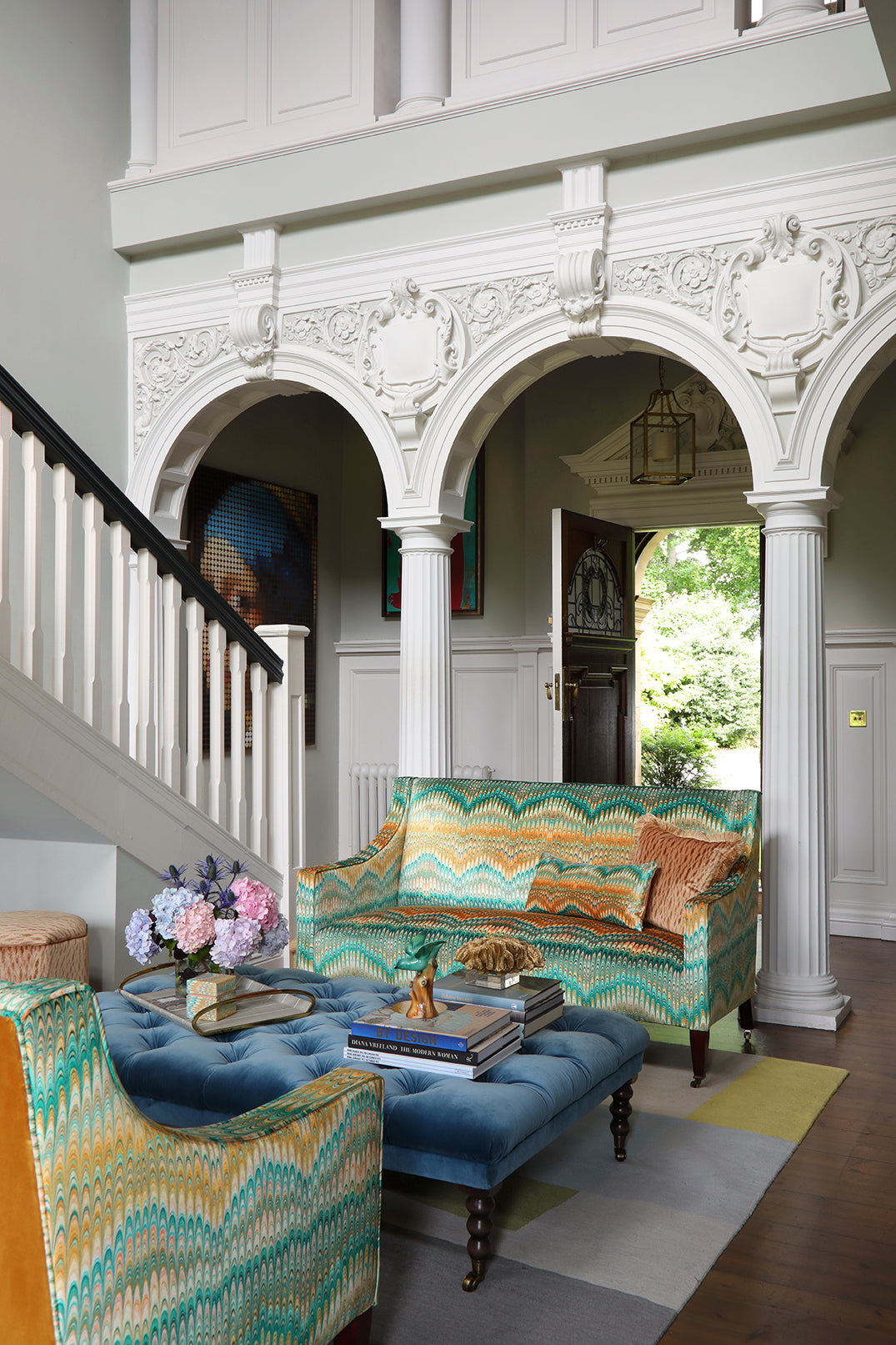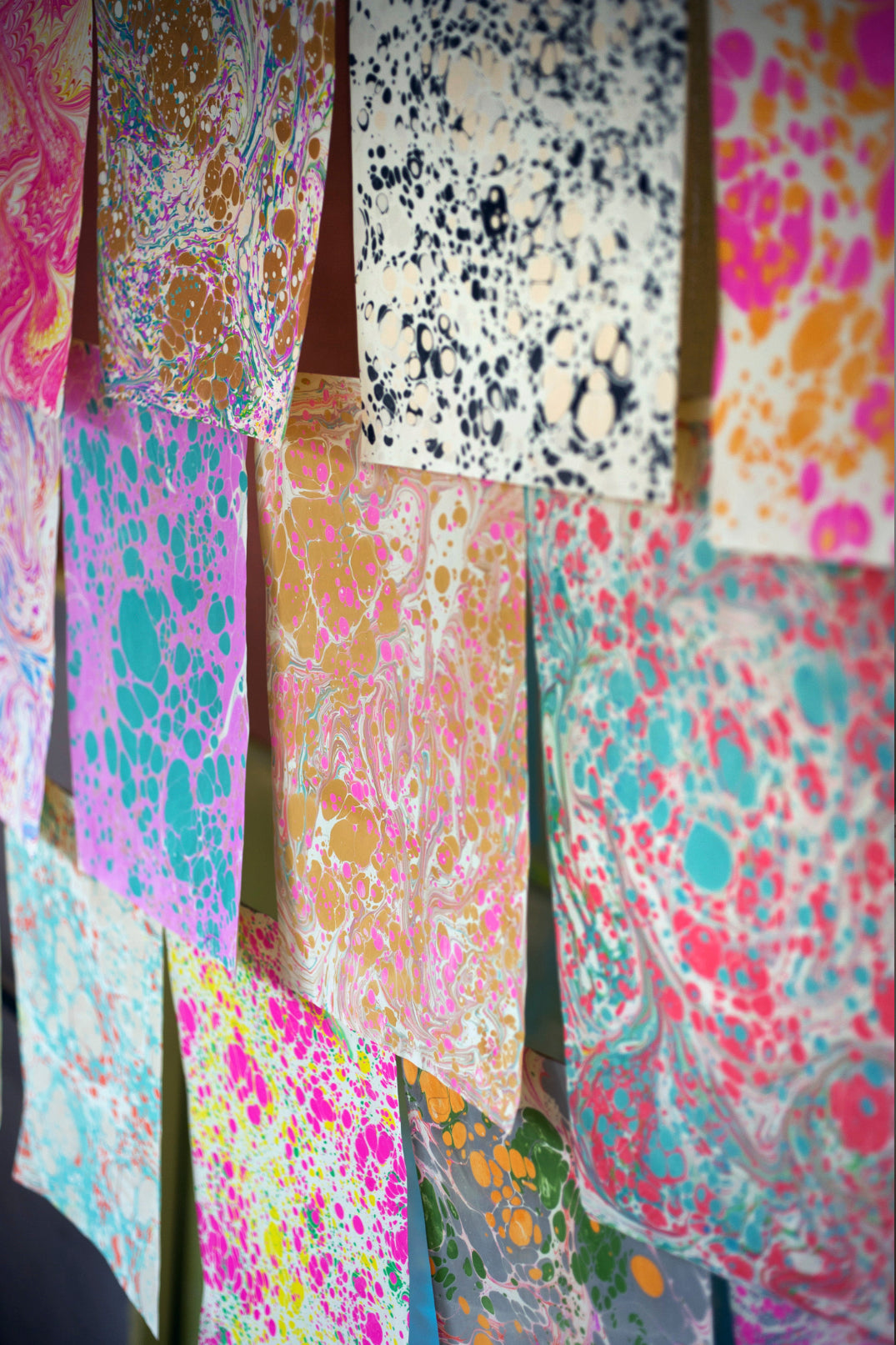The History of Hand Marbling | Susi Bellamy
Hand marbling is one of the most captivating decorative arts - a delicate dance of pigment, water and paper that produces fluid, dreamlike patterns, each entirely unique. With roots stretching across continents and centuries, marbling has adorned the pages of precious manuscripts, wrapped treasured books, and more recently, found its way into luxury home decor, stationary and textiles
The Origins of Marbling
While most closely associated with European craftsmanship, the earliest forms of marbling are thought to have originated in Asia. As far back as the 10th century, artisans in Japan practiced Suminagashi, meaning "floating ink." Using drops of ink floated on water and gently manipulated with breath or brushes, they created ethereal, cloud-like patterns on paper
Centuries later, a different but related technique appeared in Turkey: Ebru, or “cloud art.” This technique, developed in the Ottoman Empire during the 15th and 16th centuries, involved mixing pigments with ox gall to make them float and flow on water more evenly. Ebru was used to decorate official documents and poetry, as well as religious texts

The European Renaissance: Marbling as a Craft Tradition
Marbling reached Europe via trade routes in the 17th century, with Italy - particularly Florence and Venice - quickly becoming centres of excellence. Italian marblers adapted and refined the techniques, often developing closely guarded recipes for paints and dispersants. Their work soon extended to bookbinding, where marbled papers were used as endpapers or covers for fine books, giving each copy a signature finish
From Italy, the craft spread across the continent to France, Germany, and England, with each region developing its own distinctive patterns and palettes. The traditional “nonpareil”, “peacock,” and “shell” designs remain iconic to this day - Susi developed a pattern inspired by the Peacock design and it has now become one of her best-selling designs, available in many different colourways and scales, the Bouquet design is a real showstopper

A Symbol of Prestige and Individuality
In the 18th and 19th centuries, hand-marbled paper was synonymous with refinement. It was used in correspondence, luxury stationery, and fine bindings. Each piece, impossible to replicate exactly, symbolised craftsmanship and individuality. In an era before mass production, it was a small yet significant mark of prestige
Marbling Today: A Resurgence in Artisanal Value
Though industrial printing nearly eclipsed traditional marbling in the 20th century, recent years have seen a remarkable revival. Artisans and designers across the globe have returned to the technique - embracing its unpredictability and elegance
Today, hand marbling appears on everything from upholstery fabrics and lampshades to candle boxes and box files. It resonates with a renewed appreciation for slow, mindful craft and the beauty of imperfection
For Susi, the rich history and tactile artistry of marbling are a continual source of inspiration. Drawing on centuries-old techniques, she reimagines this traditional craft through a modern lens - transforming the fluid, organic patterns of marbling into luxurious, one-of-a-kind homeware pieces

Explore the Collection
Bring the artistry of hand marbling into your own home with Susi’s exclusive range of marbled homeware. Each piece is thoughtfully designed, celebrating the fluid elegance of this historic craft





Leave a comment